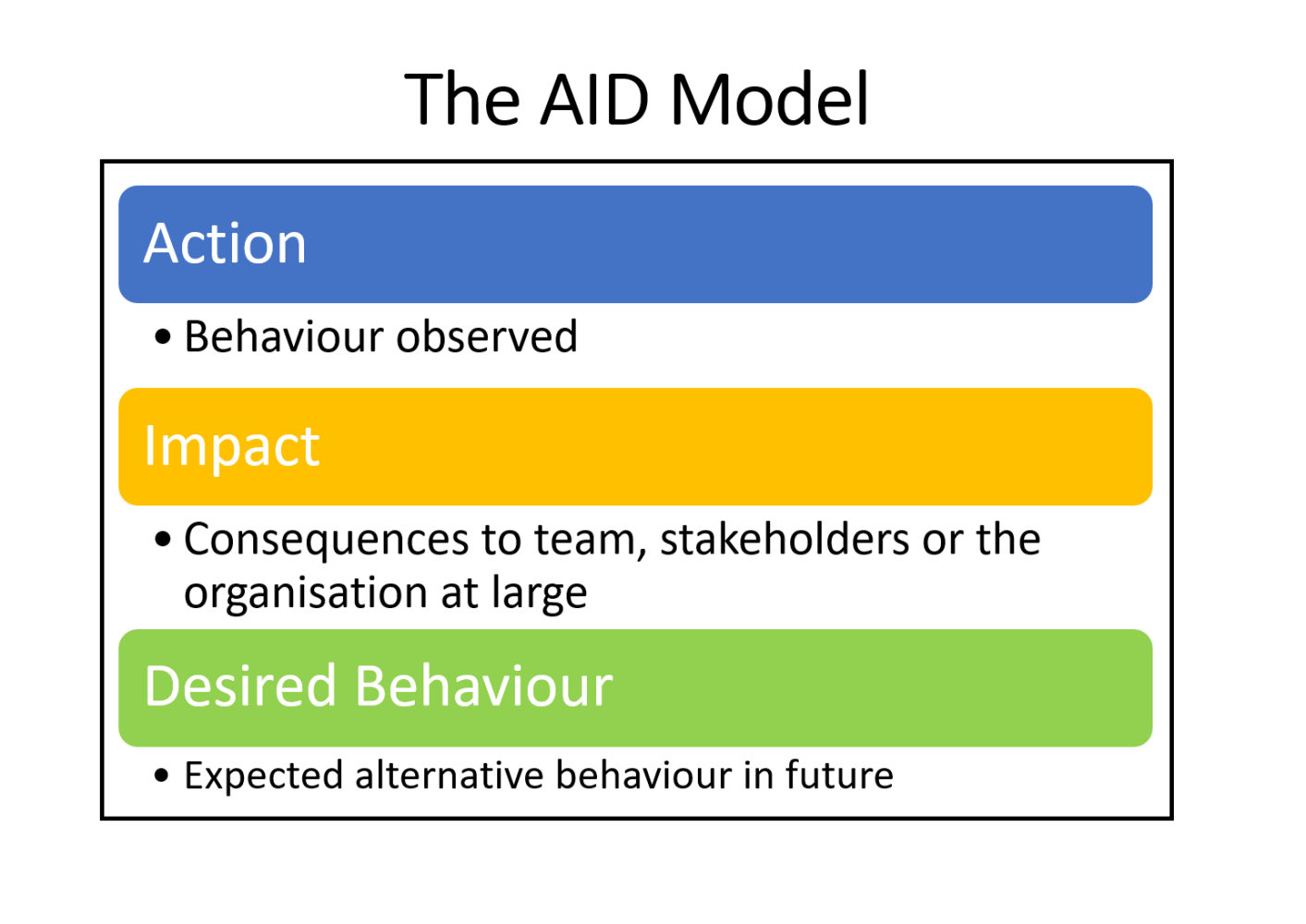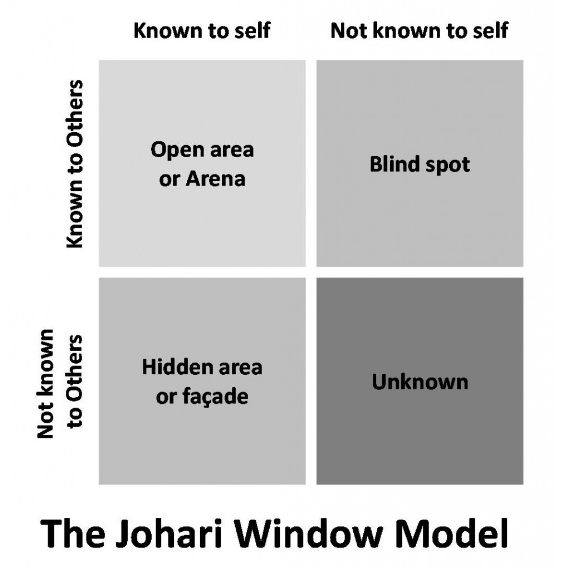Feedback is hard to give and it’s hard to receive. I’m referring to constructive or developmental feedback.
Based on my experience coaching C-Suite executives and running leadership workshops for emerging-senior leaders at AIM (Australian Institute of Management) I can say that giving constructive feedback is seen as a daunting task for many. Even seasoned leaders will often postpone having that difficult conversation about their team member’s (or peers) undesired behavior.
As we know, not addressing a team member’s poor behavior can have a detrimental impact on the team’s culture/morale. The cost of delaying such tough conversations can be high.
Remember that when (skillfully) giving your team member constructive feedback you are doing them a favor and helping them to learn and grow!
Giving Feedback
In order to plan and deliver (constructive) feedback effectively you may want to use a framework as a guide. The AID model is a simple tool and it’s a good place to start.

Prior to the conversation, you may want to consult when is a good time to talk and give them a heads up so they are prepared. Choosing the right place and time for both of you will increase the likelihood of the message being well-received. It might be helpful to select a neutral place to have the conversation.
You can use the AID model to structure your message and keep you on track during the conversation. When the stakes are high, strong emotions will inevitably be present so having a few bullets in front of you to stay focused can be very handy. Your opening line could include your genuine intention (e.g. to improve the working relationship and/or help them to succeed in their role).
A – ACTION
We mention the undesired behavior observed by sticking to the facts and stating what the person did or said (or didn’t do or didn’t say). Be mindful of your word choice and tone.
I – IMPACT
Here we share what the impact has been (or could have been) to the team involved, stakeholders (internal/external), and the organisation. Due to the lack of self/other awareness, it’s not uncommon that people are not conscious of the potential impact of their words/actions so don’t be surprised if this dialogue is an eye-opener to them.
D – DESIRED OUTCOME
Here we coach them, sharing what we would like to see in the future instead. We share the desired behavior. Alternatively, you could also ask them what they think/feel would be the best way forward. This is a more empowering approach and will encourage greater ownership.
When giving feedback:
DO
✔ Don’t delay. Give examples. Be specific!
✔ Learn tools and models to do it skillfully
✔ Choose the right time, the right place, and the right words/tone
Receiving Feedback
According to the two psychologists, Joseph Luft and Harrington Ingham who created the JOHARI Window Model pictured below, we all have blind spots.

If that is the case how can you find out how are you REALLY doing as a leader?
One way is through self-reflection and observation. Using an executive coach as a soundboard and as a challenger can help you to gain some valuable insights.
Another way, probably faster/more effective is through taking the courage pill and asking for feedback, conducting a 360 survey!
Now, remember that the feedback received is the person’s PERCEPTION of you. Not necessarily it’s the absolute truth. However, as the saying goes…”Where there is smoke, there is fire.”.
Once you receive the feedback, it’s totally up to you what will you do with it. You can dispute (not recommended!), deny or listen and choose what you will take on board and what you will discard. True be said, occasionally, the issue is not you but them. Only you will know. Be honest with yourself. This is a good time to exercise humility and your listening skills.
When asking for feedback:
DO
✔ Give people a heads up. Remember that giving feedback is hard and if you want to know their truth you need to allow them time to think, plan and articulate how they will deliver the message to you.
✔ Express your sincere desire to know how they perceive you and your intention to become a better leader.
DON’T
❌ Don’t put them on the spot by asking for feedback now.
When receiving feedback:
DO
✔ Be open-minded.
✔ Remember their feedback is their perception, not necessarily the reality but there is value in knowing how they see you anyway.
✔ Listen and try to understand their perspective, and exercise empathy.
✔ Be grateful that they feel safe enough to tell you their truth. Reframe it. Try to see it as a gift – an opportunity to learn and grow.
DON’T
❌ Be defensive. Otherwise, it’s unlikely they will share their view again in the future and you will miss out on the opportunity to discover other blindspots.
After asking for feedback if they don’t have any gifts for you, consider the two options:
Option #1 – You are doing amazing. Pad yourself on the back. Keep up the great work!
Option #2 – Ask yourself if you have created enough psychological safety to allow them to be honest with you…
Good luck! 🍀
To learn more:
- Books Feedback Flow and Fixing Feedback by Georgia Murch
- Book Crucial Conversations (Tools for Talking when Stakes are High) by Joseph Grenny
- Book Working with Emotional Intelligence by Daniel Goleman



